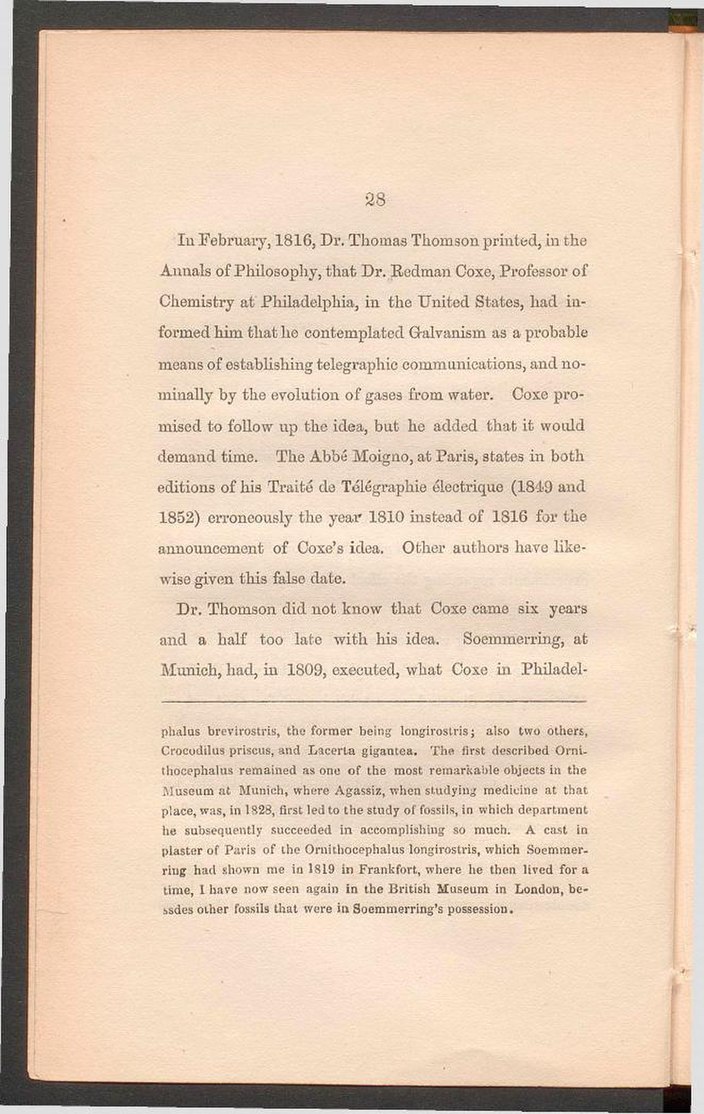28
In February, 1816, Dr. Thomas Thomson printed, in the
Annals of Philosophy, that Dr. Redman Coxe, Professor of
Chemistry at Philadelphia, in the United States, had
informed him that he contemplated Galvanism as a probable
means of establishing telegraphic communications, and
nominally by the evolution of gases from water. Coxe
promised to follow up the idea, but he added that it would
demand time. The Abbé Moigno, at Paris, states in both
editions of his Traité de Télégraphie électrique (1849 and
1852) erroneously the year 1810 instead of 1816 for the
announcement of Coxe’s idea. Other authors have
likewise given this false date.
Dr. Thomson did not know that Coxe came six years and a half too late with his idea. Soemmerring, at Munich, had, in 1809, executed, what Coxe in
Ornithocephalus brevirostris, the former being longirostris; also two others, Crocodilus priscus, and Lacerta gigantea. The first described Ornithocephalus remained as one of the most remarkable objects in the Museum at Munich, where Agassiz, when studying medicine at that place, was, in 1828, first led to the study of fossils, in which department he subsequently succeeded in accomplishing so much. A cast in plaster of Paris of the Ornithocephalus longirostris, which Soemmerring had shown me in 1819 in Frankfort, where he then lived for a time, I have now seen again in the British Museum in London, besides other fossils that were in Soemmerring’s possession.
